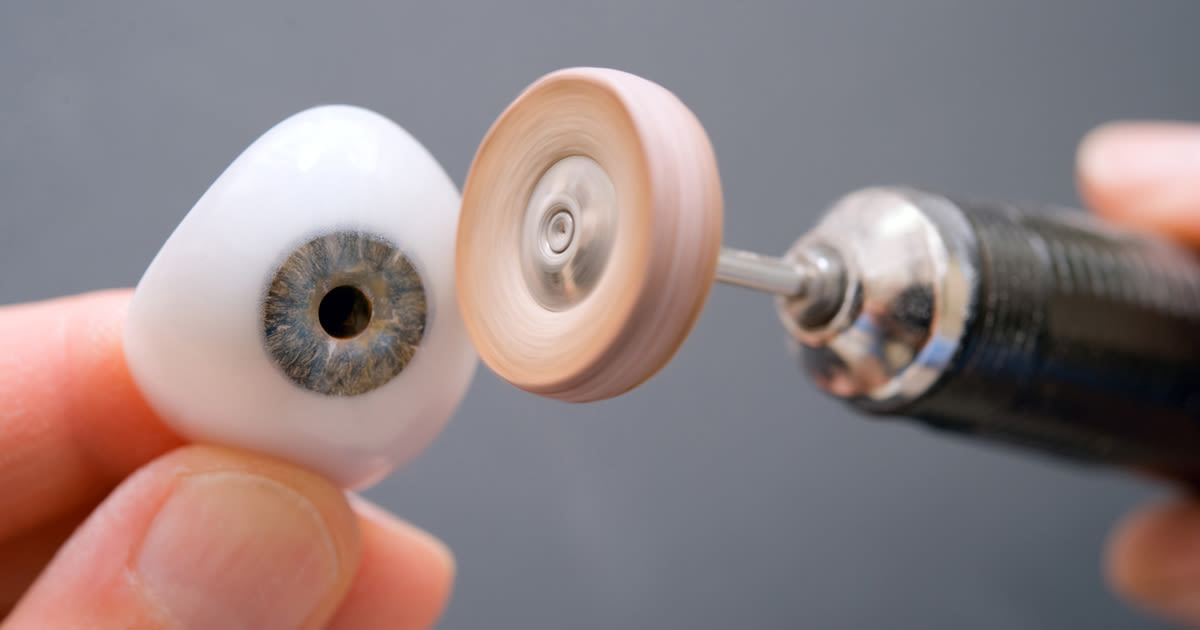Our eyes are one of the most complex sensory organs in our bodies and are taken advantage of everyday. The geometry and intricacy of our eyes is so specific, sometimes you wonder how biology came up with it! In cases of impairment or complete absence of an eye/eyes, we need to find ways to bring back function effectively as well as making them as realistic as possible, to allow for better quality of life. Prosthetic eyes have been around for millennia, but mainly for the purpose of restoring aesthetics. It’s time to further develop the functional aspect.
Currently…
Traditional ocular prosthetics were typically made of acrylic but now use silicone, or a combination to mimic appearance and natural eye movement. By attaching the prosthetic to residual eye muscles, its allows for limited functionality. Aesthetics have come a lot further in terms of mimicking the natural eye by customising things like colour of the iris, iris patterns and blood vessels. This type of customisation may make patients feel more confident in their prosthetic and further enhance their quality of life. As far making and implanting these prosthetics, the procedure has become easier and more sustainable by using 3D printing and quicker, less invasive surgeries. Research has been conducted to incorporate electronics to give the user rudimentary vision, using things like built-in cameras with sensors, which detect and light and dark. But how can we develop this further?
In The Future…
Loss of vision can come in various forms, e.g it maybe congenital, damage caused by injury or even cancer. Therefore, we must consider the best options which take into account risk of surgery, what patients expect from their implant and if it is the most suitable option. With all these things in mind, advancements in ophthalmology and neural circuits can eventually lead to enhanced functional capabilities of ocular implants. What areas of research does this include?
- Neural Interface : Involve incorporating cameras, sensors, and neural interfaces to transmit visual information directly to the visual cortex of the brain, by bypassing components that would otherwise be needed to transmit visual information, for example damage to the optic nerve. This is the type of technology we see in the development of a bionic eye.
- Biocompatibility: Improvements in materials science could lead to the development of ocular prosthetics that are even more biocompatible and long-lasting, reducing the risk of complications such as infections, tissue rejection and the risk from additional surgery.
- Regenerative Medicine: Bioengineer artificial fully functioning eyes that are indistinguishable from natural eyes. Using stem cells and other biological materials to create new tissue or make completely artificial eyes, engineered using nanowire to replicate photoreceptors and silicone to replicate the vitreous humor in our eyes. This type of artificial eye has been developed and may surpass the ability of an actual human eye.
- Artificial Intelligence: Integration of artificial intelligence could enhance the functionality of ocular prosthetics by providing features such as automated image processing, object recognition, and augmented reality overlays, further improving the wearer’s visual experience.
Summary
As scientists, there is much we must take into consideration. Managing patient expectations, improving quality of life but simultaneously making it accessible to everyone. Advancements like these can be heavily capitalized to make a profit, which then creates inequality and reduces accessibility to those who need it most so innovation must come with caution. The future of ocular prosthetics holds promise for significant advancements in both aesthetics and functionality however, it’s important to note that many of these developments are still premature and may take time to implement.

Your blog is well-structured and captures the reader’s interest effectively.
You can improve your blog by adding hyperlinks to support your points and make them more credible. Try using homemade visuals to make your content more engaging. Take a critical look at any limitations in the research and consider how they’ve influenced your own views and reflect on your own experiences.